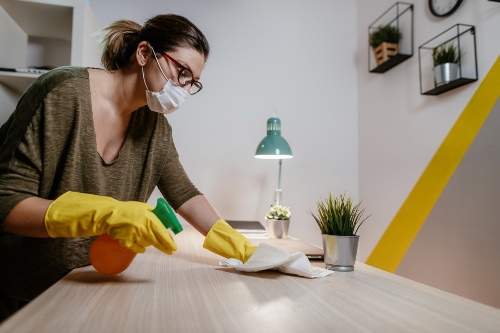The kitchen is truly the heart of your home. It’s where family and friends gather for coffee, conversation, and cooking great meals. But when this dirty little secret gets out, your hub will quickly turn from light and airy to dreary and stale. And worse, you’re inviting more than just house guests into your kitchen — you’re inviting potentially dangerous bacteria and mold. Here’s the number one mistake you are probably making in your kitchen, and why you need to remedy it fast.
BREAKING: Diabetes Breakthrough Leaves Doctors Speechless - Try This Tonight
The # 1 mistake…not cleaning your fridge
When you take the most important appliance in your kitchen for granted, like it or not, you’re treating your family and friends to a buffet of bacteria. And the daily specials include salmonella, listeria, and E. coli. Properly cleaning and maintaining your refrigerator is enormously important, according to research, although it’s one of those tasks that is often overlooked and considered too hard. Out of sight, out of mind — right? But sooner or later, you need to deal with your dirty, stinky fridge because what you don’t see is what could be making you and your family sick.
What’s making you sick in your refrigerator?
There are two types of bacteria growing in your refrigerator: spoilage bacteria and pathogenic bacteria.
Spoilage bacteria refers to microorganisms too small for the human eye to detect, says the U.S. Department of Agriculture (USDA.) Nevertheless, overtime, they’ll cause your veggies and fruits to get slimy and mushy, and your poultry and meat to rot, smell bad, and taste bad. Although you probably wouldn’t choose to eat the spoiled food in your refrigerator, if you did, you’d likely get food poisoning. Many people don’t realize that bacteria like listeria can survive refrigeration and even freezing conditions. And while healthy people rarely get ill from listeria, it can be fatal for people with weakened immune systems, unborn babies, and newborns.
Pathogenic bacteria, on the other hand, grow rapidly but don’t normally affect the look, smell, or taste of food. In other words, you’ll never know that a bacteria, virus, or other microorganism is present in your refrigerator. And if that doesn’t scare you, according to the Australian Institute of Food Safety, a study conducted on the typical frost-free home refrigerator found that just the salad drawers alone contained an average of 3,093 bacteria units per square inch. Yet, the number of bacteria units per square inch deemed safe for food preparation is between 0 and 3.94. So, unless you’re a scientist, you likely aren’t even aware of the potentially harmful bacteria growing in your fridge. Proper cleaning is your best course of defense and should be done often.
The best way to clean your refrigerator
Your refrigerator is probably the most used appliance in your kitchen, so, it’s vital to keep it clean, inside and out. A clean fridge exterior brightens the kitchen, and a clean interior, while also appealing, keeps food fresher longer, and allows for more usable space. Here’s how to clean a fridge inside and out.
- First things first…Have a cooler ready with ice packs. Next, remove all of the food items from the refrigerator and be sure to place any perishable foods into the cooler. Non-perishable are fine on the counter. Just don’t leave food out for longer than an hour.
- Make sure to check expiry dates and throw out any foods that are past prime or aren’t being eaten. There’s no point in holding onto foods that no one really likes. Compost any old product and recycle containers if you can. Take out the trash bag with the old food straight away.
- Remove all shelves and drawers. You’ll just get a more thorough clean when they’re outside the fridge. Plus, it allows you better access to clean the interior of the refrigerator.
- Wash shelves and parts with warm water and rinse to assure no traces of dishwashing liquid remains. Make sure removable pieces are room temp before placing in water to avoid a sudden temperature change and cracking.
TRENDING: Newly Legalized Herb Relieves Pain - Available Without A Prescription
Next tackle the interior
- Fill a spray bottle with two tablespoons baking soda and a quart of hot water. Alternatively, you can use vinegar — one-part white or apple cider vinegar to three parts water.
- Spray all interior walls, surfaces, insides of the doors, and any non-removable shelves. Wipe clean with a sponge. You can use a toothbrush for heavily soiled areas and wipe clean.
- For stubborn stains, use baking soda and water to make a paste. Let it sit for at least ten minutes, then wipe away.
- Make sure shelves and drawers are completely dry — and the interior of the refrigerator has been cleaned — before putting everything back in place.
Plan to clean the refrigerator once, every three months, and before major holidays, making room for the extra ingredients, dishes, and leftovers. Going forward, make sure you clean up spills immediately and regularly wipe down shelves. Food spills build-up often in the bottom of a refrigerator, and will not only leave a residue but potentially dangerous bacteria as well.









